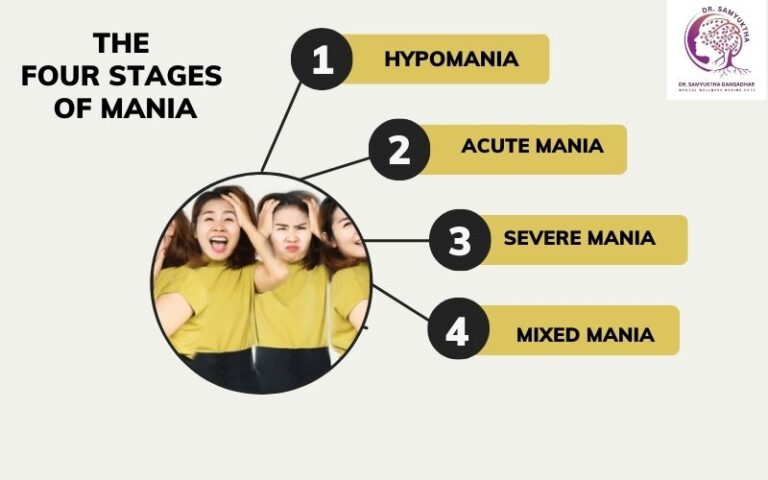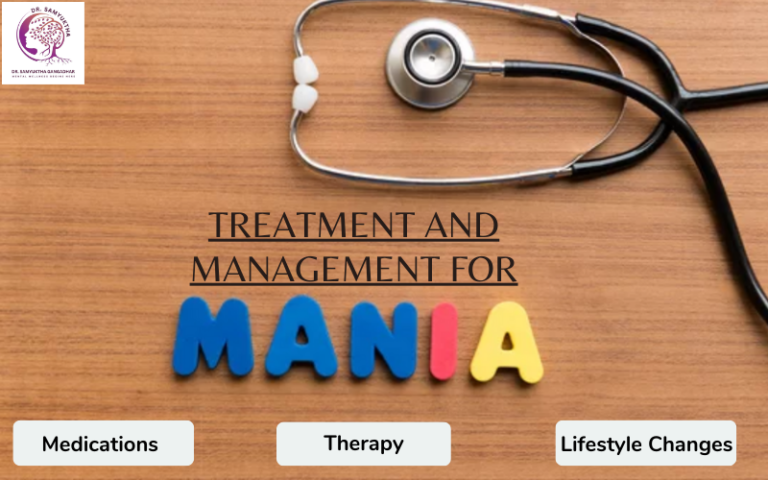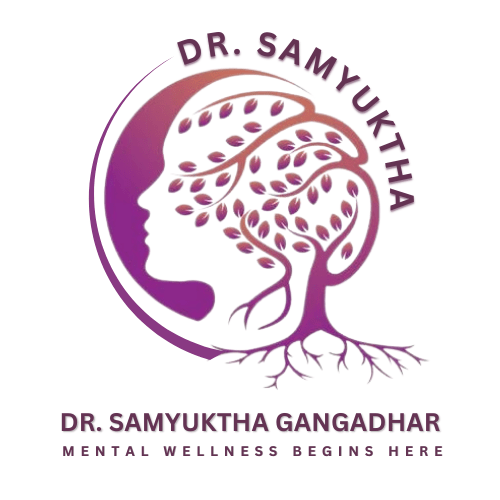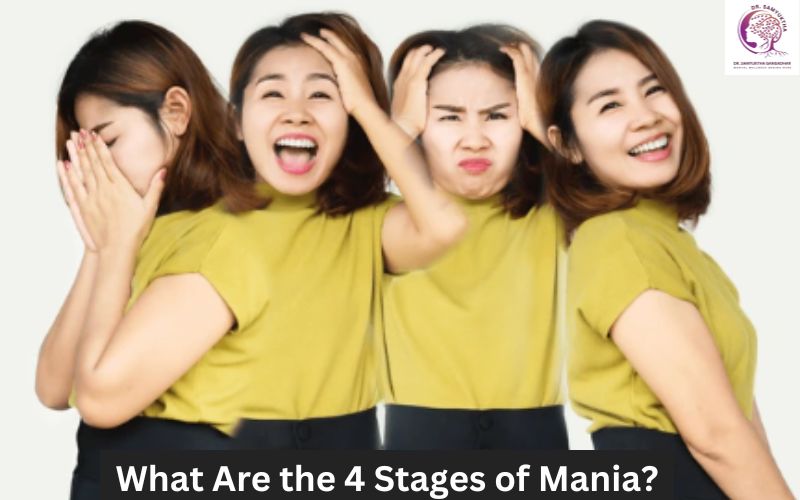Introduction
Mania, a state characterized by an elevated or irritable mood, is a key symptom of bipolar disorder and other mood disorders. Understanding the stages of mania can provide valuable insights into the progression of this condition, its impact on daily life, and the available mania treatment options. In this blog, we will explore the four distinct stages of mania, their symptoms, and implications, drawing on credible research and expert opinions to offer a comprehensive overview of effective mania treatment strategies.
Understanding Mania
Mania is a mood episode where an individual experiences intense euphoria, energy, and agitation. It is one of the core features of bipolar disorder, which also includes depressive episodes. Recognizing and understanding the stages of mania is crucial for effective management and treatment. This blog will delve into these stages, providing valuable information for patients, caregivers, and mental health professionals.
The Four Stages of Mania

1. Hypomania
Definition and Symptoms: Hypomania is the mildest form of mania. It often goes unnoticed or is mistaken for a high-energy phase or personality trait. Symptoms include:
- Elevated Mood: The individual feels unusually cheerful or irritable.
- Increased Energy: There is a noticeable increase in activity levels and productivity.
- Enhanced Creativity: Individuals may experience bursts of creativity or new ideas.
- Reduced Need for Sleep: A decreased need for sleep without feeling fatigued.
2. Acute Mania
Definition and Symptoms: Acute mania represents a more severe stage of mania and significantly impacts daily functioning. Symptoms include:
- Intense Euphoria or Irritability: The mood is excessively high or extremely irritable.
- Hyperactivity: There is an overwhelming surge in physical and mental activity.
- Racing Thoughts: The individual experiences rapid, disorganized thinking.
- Impulsive Behavior: Risk-taking behaviors and poor decision-making are common.
3. Severe Mania
Definition and Symptoms: Severe mania is characterized by extreme and debilitating symptoms. It often requires immediate medical intervention. Symptoms include:
- Extreme Agitation: The person may exhibit severe restlessness and agitation.
- Delusions: There may be false beliefs or paranoia.
- Hallucinations: Individuals might experience sensory distortions, such as hearing voices.
- Impaired Functioning: Daily functioning is severely compromised, affecting personal and professional life.
4. Mixed Mania
Definition and Symptoms: Mixed mania involves symptoms of both mania and depression simultaneously. This stage can be particularly challenging due to the conflicting nature of symptoms. Symptoms include:
- Simultaneous Mania and Depression: The individual may experience high energy and mood swings along with symptoms of depression.
- Increased Risk of Suicide: The combination of high energy and depressive thoughts can increase the risk of suicidal behavior.
- Confusion and Disorganization: The conflicting symptoms can lead to confusion and difficulty in maintaining focus.
Treatment and Management
Effective treatment of mania involves a combination of medication, therapy, and lifestyle changes. The goals are to stabilize mood, prevent relapse, and improve overall functioning.

Medications
Mood Stabilizers: Lithium controls mood swings and prevents episodes, while Valproic Acid manages acute mania and helps prevent relapses. Carbamazepine serves as an alternative for mood stabilization when lithium and valproic acid are not effective.
Antipsychotics: Medications such as Olanzapine, Risperidone, and Quetiapine are used to manage severe manic and psychotic symptoms.
Antidepressants: SSRIs and SNRIs are prescribed to treat depressive symptoms and are used alongside mood stabilizers.
Antianxiety Medications: Benzodiazepines offer short-term relief for severe anxiety.
These medications are essential for controlling mania and enhancing stability, especially when combined with therapy and lifestyle changes.
Therapy
Cognitive Behavioral Therapy: (CBT) focuses on changing negative thoughts and behaviors, leading to reduced symptoms and improved coping skills.
Psychoeducation provides crucial information about bipolar disorder, which enhances patients’ understanding and adherence to treatment.
Interpersonal and Social Rhythm Therapy: (IPSRT) aims to stabilize daily routines and relationships, thereby reducing the frequency of mood episodes.
Family Therapy involves family members in the treatment process, improving family dynamics and support.
Mindfulness-Based Therapies incorporate mindfulness and relaxation techniques to reduce stress and improve emotional regulation.
Together, these therapies play a vital role in managing mania by strengthening coping strategies and support systems.
Lifestyle Changes
Routine involves establishing a consistent daily schedule, which helps stabilize mood and manage symptoms effectively.
Sleep is crucial for maintaining regular patterns, as it prevents mood swings and supports overall mental health.
Stress management is achieved through techniques like mindfulness, relaxation, and exercise, which help reduce stress and prevent manic episodes.
A healthy diet, consisting of balanced meals, supports overall well-being and energy levels.
Avoiding substance abuse by steering clear of drugs and alcohol is essential to prevent exacerbation of symptoms and interactions with medications.
Together, these lifestyle changes play a key role in managing mania by promoting stability and reducing triggers.
About Dr. Samyuktha Gangadhar
Dr. Samyuktha Gangadhar, M.D. (Psychiatry), is a highly experienced psychiatrist specializing in the treatment of mood disorders, including mania and bipolar disorder. With a deep commitment to providing compassionate and effective care, Dr. Gangadhar offers personalized treatment plans that combine medication management, therapy, and lifestyle adjustments. Her expertise and dedication help patients achieve stability and improve their quality of life.
Conclusion
Understanding the stages of mania is essential for effective treatment and management of bipolar disorder. From hypomania to severe mania, each stage presents unique challenges and requires tailored interventions. By recognizing the symptoms and seeking appropriate care, individuals can better manage their condition and improve their quality of life.
For more information on managing mania and other mood disorders, visit Pushpamindcare’s Mania Treatment in Kolkata. Dr. Samyuktha Gangadhar, M.D. (Psychiatry), offers comprehensive care and personalized treatment plans to support individuals through their journey with bipolar disorder.
FAQs
The best treatment for mania involves a combination of medication, therapy, and lifestyle changes. At Pushpamindcare, led by Dr. Samyuktha Gangadhar, M.D. (Psychiatry), we tailor treatments with mood stabilizers, antipsychotics, and personalized therapy to manage symptoms effectively.
No, mania is not a form of depression. It is a distinct state characterized by elevated mood and increased energy, while depression involves low mood and fatigue. Pushpamindcare, under the expertise of Dr. Samyuktha Gangadhar, M.D. (Psychiatry), offers comprehensive treatment for both conditions.
Yes, with the right treatment, the brain can recover from mania. Pushpamindcare provides effective treatment plans, including medication and therapy, to help stabilize mood and support recovery.

